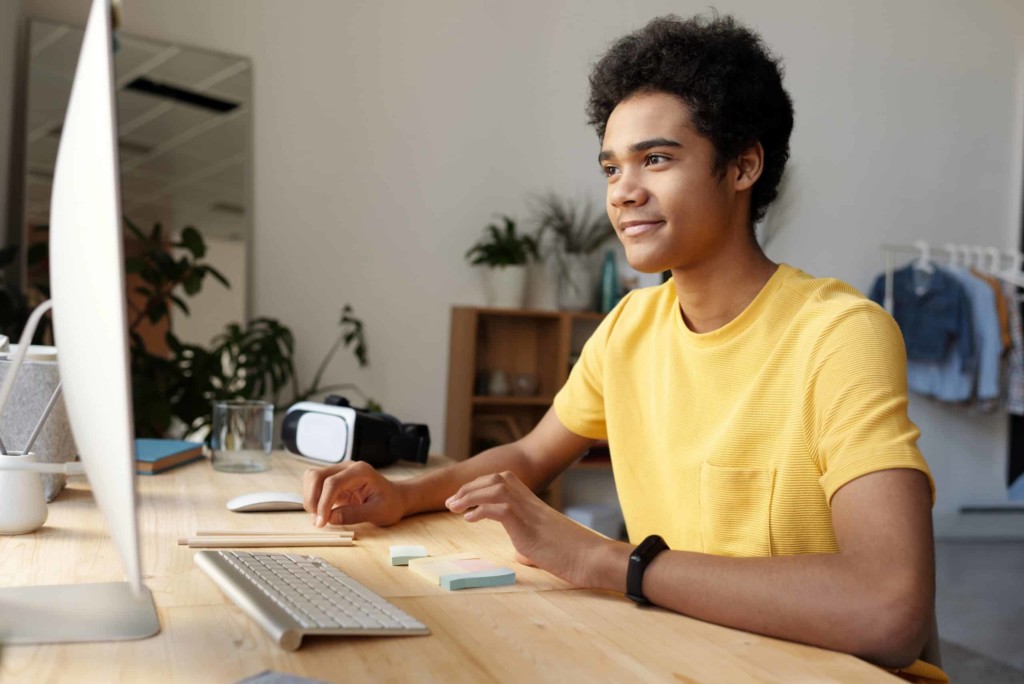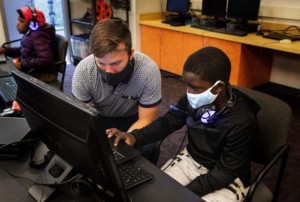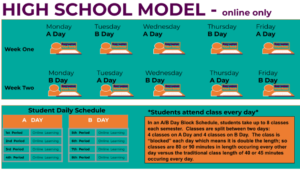Making the Most of Distance Learning

By: Lindsay Hayward
The distance learning schools are experiencing is much different than what happened in the spring. When schools shut down, districts were in crisis mode, racing to do something that had never been done before. The primary goal of emergency distance learning was to check-in, engage students, and make sure they were safe.
Virtual learning and distance learning can be far more robust and engaging when teachers have time to prepare for it. For the fall, teachers are developing lesson plans, integrating technology, and working to create something that more resembles what students would experience in a classroom.
As they develop their academic plans, teachers also need to prepare their students to learn again, acknowledging the significant trauma they experienced. Schools can’t ignore what happened in the spring, as they consider the social and emotional learning component. In a survey of parents and guardians conducted by LPAred, LPA’s research team, 65% listed their children’s “feeling of isolation” as the main reason they wanted students to go back to school.
In our discussions with parents and educators this summer, they’ve talked about how teachers will need to work even harder to create a welcoming environment for students who may be reacting in different ways to recent events. Responses will be very different at different age levels. But specific themes emerged from the talks with educators, as they look to get students back into learning mode.
Create Structure
Consistency and routine are important. Teachers should start each day with a greeting. They need to make sure students see them and are connecting. Have a check-in question or an icebreaker ready and watch for individual responses. In-person, a student’s behavior, body language, and expressions are relied on to see if they are thriving or struggling. This becomes more challenging in a virtual environment. It is important to continually evaluate which students need extra attention.
Throughout the course of the day, teachers are looking for ways to emulate the structure of a traditional classroom. If there is a reward system in the physical classroom, they are finding virtual equivalents, such as a homework pass or a class virtual movie party. If there were classroom traditions such as journal writing or show and tell, those can be recreated in the digital world. Create a sign off ritual to help build that sense of routine.
Establish Expectations
Teachers will need to make it clear what is expected of students—and what is not. Don’t assume everybody understands the nuts and bolts of how things will work in this new classroom format. Is video-sharing required or not? It’s not a simple question. Some students may not want to broadcast their home environment. What about muting microphones or using chat? Should they raise their hand to ask questions?
Everyone in the class will need to understand what’s appropriate and what’s not in order to feel comfortable in this new environment. And that process should be evaluated. Students should be provided with the opportunity to give feedback on how it’s working.
Find New Ways to Connect with Students
Educators should look for creative ways to engage students. In the virtual classroom, it will always be a challenge for students to consistently provide their attention. Giving students the ability to share their screen during a lesson or making an extra effort to ensure students are participating will be essential.
In recent weeks, I’ve heard many stories of phenomenal teachers taking the extra step to stay in touch with students. In some districts, teachers are calling every student for one-on-one discussions at least once a week. But the connection can take many forms. An e-mail note or a drive-by visit can renew that personal connection. A birthday celebration for a student can take on a new importance when students are physically separated.
Build School Spirit
In this digital world, it’s easy to feel disconnected. Educators will need to create a sense of community and togetherness. Without that social and emotional wellbeing connection, it will be difficult to engage the academic side of their brain.
Many of the educators I’ve talked to have discussed the challenge of creating that sense of what a school and a classroom feel like in a virtual realm. We all know what school spirit means on a physical campus, but what does it mean in a virtual world? At least for the foreseeable future, we know that community won’t be about Back to School Night, weekly assemblies in the gym, or school dances.
The challenge facing educators is to create a sense of community when you can’t gather in the traditional sense. In “The Art of Gathering: How We Meet and Why it Matters,” Priya Parker writes about the need to focus on the purpose of why we gather. In this new learning environment, that “why” takes on different meanings, as educators look to support students in ways that go far beyond traditional school spirit.
Plan Fun
Recreating the school day also means making sure there is time for play and some form of social interaction. One administrative leader said teachers and staff at her school are scheduling time together to play games, essentially as a group, to promote that sense of normalcy.
The time, activities, and focus will vary for different grade levels, but educators are recognizing the importance of social check-in time and the importance of social interactions. As they analyze their minutes and create that virtual classroom, they are setting aside time for play.
Be Supportive
In this new environment, educators should look to support students as they deal with all the issues swirling around their return to school. Don’t assume disruptive behavior is solely for the sake of being disruptive. Why are they being disruptive? What is going on at home that may be causing a bigger issue? Is a family member sick?
If a student is not signing in every day, it could be due to multiple issues. Maybe there is an issue with childcare or their siblings. Maybe there is a technology issue. Teachers will need to reach out to investigate what is really going on and better understand the issues. And it will be essential to actively involve resources like counselors, administrators, and technology support to respond to a student’s individual needs.
These are unprecedented times. We build environments every day that are meant to support the social and emotional wellbeing of students. In real-time, educators have an opportunity to consider what that image of a supportive community means in a digital world, and it won’t look the same for everyone.
For more, see:
- Why We Need to Make Self-Care a Priority: Four Ideas to Start
- Podcast: Julie Freeland Fisher and Mahnaz Charania on Social Relationships and Networks
LPA Project Designer Lindsay Hayward is focused on developing innovative and effective K-12 campuses.
Stay in-the-know with innovations in learning by signing up for the weekly Smart Update.







0 Comments
Leave a Comment
Your email address will not be published. All fields are required.